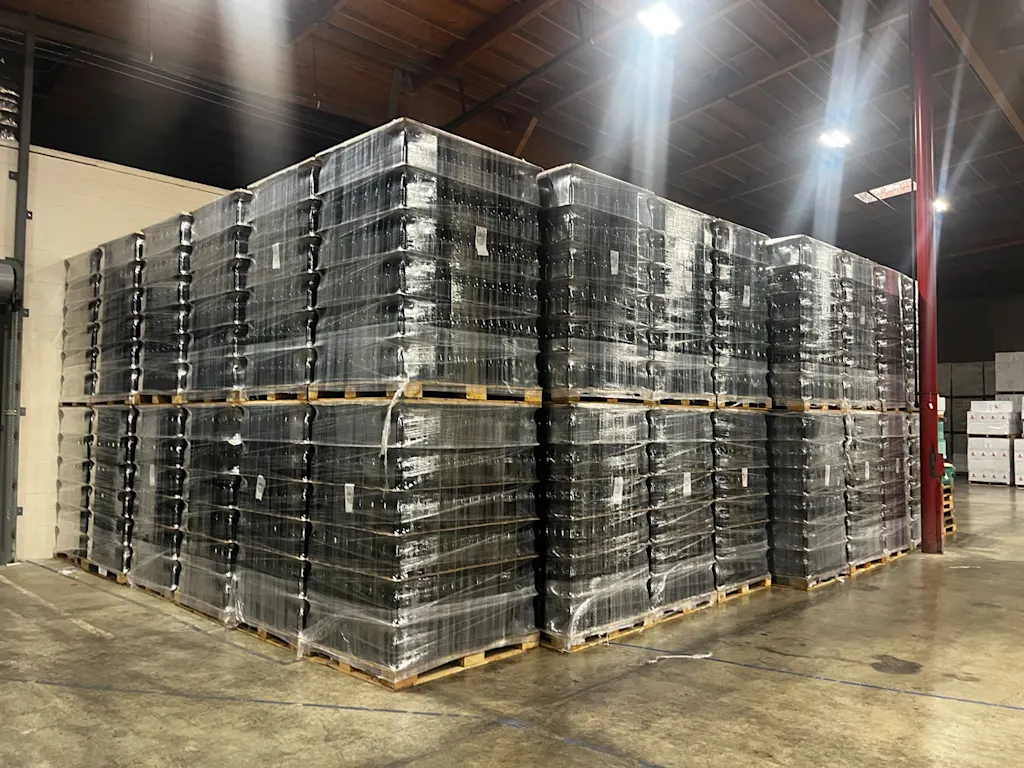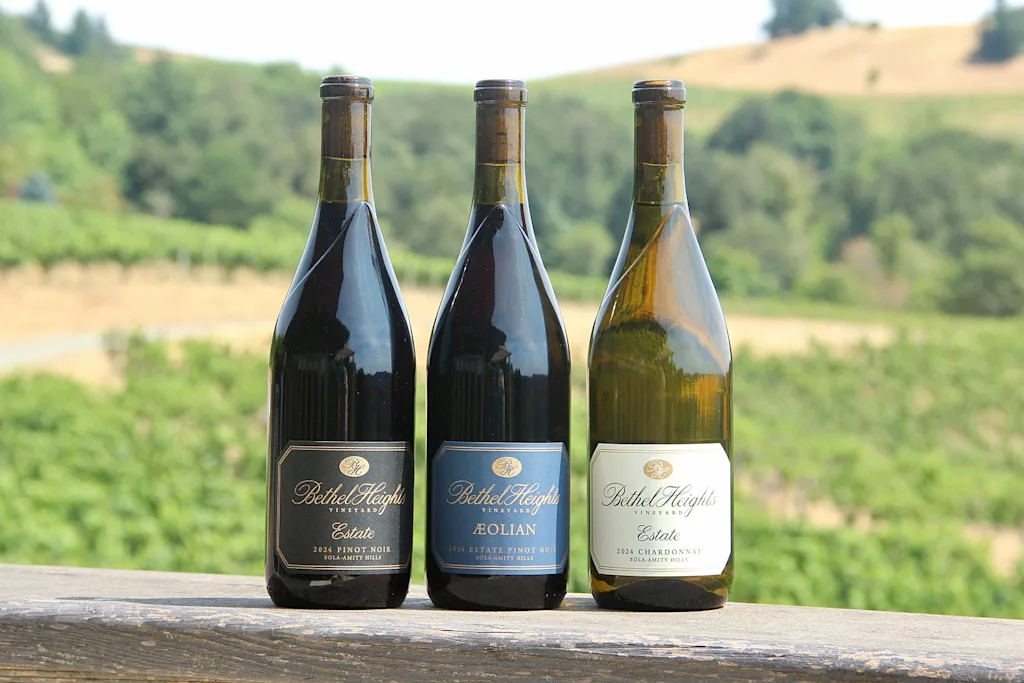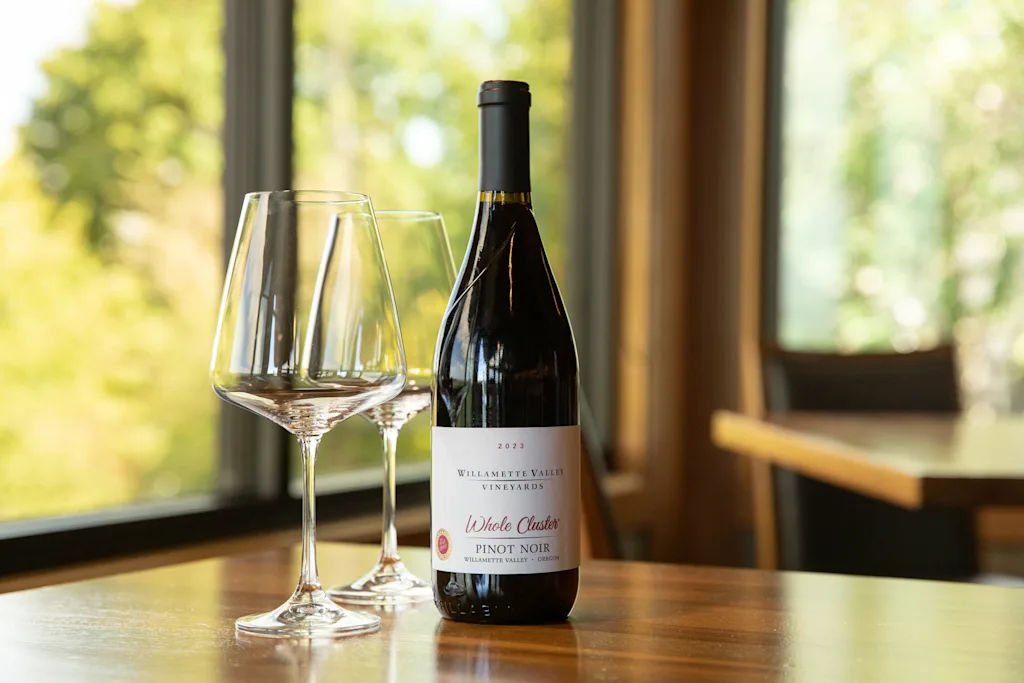This company figured out how to reuse glass wine bottles, and it’s reshaping the Oregon wine industry
The 2023 Whole Cluster Pinot Noir from Willamette Valley Vineyards has notes of candied cherries, cinnamon, and sweet tobacco. But its defining feature may be its container: a glass bottle designed specifically for reuse. Made by 3-year-old Oregon startup Revino—the first company to launch a reusable glass wine bottle in the U.S.—the Pinot Noir’s green Burgundy-style bottle is sturdy enough that it can be used, sanitized, and refilled up to 50 times.
Willamette Valley Vineyards, which operates 13 vineyards across Oregon, began selling 1,452 cases (or 17,424 bottles) of its 2023 Whole Cluster Pinot Noir in Revino’s containers last year. The winery plans to put another 1,452 cases—of its 2024 Whole Cluster Pinot—in Revino bottles again this year. Seven of its nine tasting rooms now double as collection points for Revino bottles.
“We will take any Revino bottle back,” says Jim Bernau, Willamette Valley Vineyards’ founder and CEO. That means customers can drop off bottles from Willamette’s vintages as well as any other more than 70 Oregon wineries that Revino works with, including Bethel Heights, Cameron, Et Fille, and Remy Wines. More than 40 of these wineries already have wine in Revino’s signature bottles. (The remaining wineries are still aging their wine and will bottle in Revino containers in the coming years.)
When it comes to beverages, glass is often thought of as the “greenest” packaging type. Not only is it infinitely recyclable, but unlike bauxite (used for tin cans), it doesn’t require cutting down large swaths of rainforest to mine it. But as a circular material, glass is only as good as the recycling efforts that surround it. And in the U.S., those are few and far between.
Revino founders, Keenan O’Hern and Adam Rack were critics of single-use packaging when they met in early 2022 through an MBA student who was doing a project on refillable beer bottles.
On trips to the Netherlands, O’Hern, whose mom is Dutch, had observed residents habitually returning their beer bottles to shops. “It’s just a way of life over there,” he says. “You return a beer bottle, bring it back to the shop, and they wash it and reuse it,” he says.
Rack, who worked at Portland’s Coopers Hall winery for nearly a decade, was an early adopter of refillable beer bottles, which Coopers Hall began using in 2018. (Rack’s email signature is a quote from Dr. Seuss’s The Lorax: “Unless someone like you cares a whole awful lot, nothing is going to get better. It’s not.”)
Together, they saw an opportunity to create an ecosystem for reusable wine bottles, starting in their home state of Oregon. Revino, which launched in 2023, makes money selling extra-durable U.S.-made bottles to wineries. Retrieving and washing the bottles is included in the cost of the bottles—even if that means Revino drivers have to drive 258 miles to Quady North in Southern Oregon’s Applegate Valley.
The company offers wineries a 10 cent credit on future glass purchases for each bottle returned, and an additional discount to wineries that collect and neatly stack them in a pallet. Customers, meanwhile, can return Revino bottles from one winery to bottles at any return site (not just Willamette Valley Vineyards). In Portland, that includes Vino wine shop, Statera Cellars, John’s Marketplace, and others.
Revino is on track to sell nearly half a million bottles this year, and aims to make $35,000 in monthly recurring revenue by early 2026. In addition to Oregon wineries, Revino has onboarded a handful in Napa (Frog’s Leap, Silver Oak) and Washington state, as O’Hern and Rack work to expand their model to other parts of the country. Thus far, Revino has secured more than $440,000 from investors, including a prize from the Strategic Economic Development Corporation’s Pitch Willamette.

CRACKING THE GLASS RECYCLING PROBLEM
Only 31.3% of glass is recycled in the U.S. according to the EPA. Many states don’t have curbside pick up of glass; and only 10 states have bottle bills, which require beverage makers or distributors to add a deposit on all glass bottles that consumers can recoup if they return the containers. States like Oregon and Maine that have bottle bills have fairly high recycling rates. But elsewhere in the country, many people just resort to throwing glass in the trash.
Though it’s highly recyclable, glass is an energy-intensive material. To recycle it, glass cullet (crushed glass that’s ready to be remelted), limestone, sand, and soda ash are heated to between 2,600 degrees Fahrenheit and 2,800 degrees Fahrenheit, a process that can emit toxic air contaminants when pollution controls aren’t properly installed.
Glass is also heavy, which means it’s both expensive and carbon-intensive to transport. A 2014 study commissioned by the Wine Institute in California found that the making and transporting of glass bottles account for 29% of wine’s carbon footprint.
Revino aims to solve these issues by making it easy for winemakers to reuse bottles. Before launching, O’Hern and Rack held meetings with dozens of Oregon winemakers to collaboratively design the company’s first reusable wine bottle—the green Burgundy one. Made by glass manufacturer O-I Glass in its Kalama, Washington, and Tracy, California plants, the bottles are produced with 50% to 70% recycled material.
Even though Revino’s bottles are durable enough to withstand roughly 50 washings, they weigh just 495 grams, which is less than some winery’s regular bottles. Winemakers concerned about their carbon footprint appreciate this since the lighter the bottle, the less fuel is used to transport bottles to club members on the East Coast.
Revino’s first Flint bottle—clear glass, for rosé, pinot gris, and other whites—will be produced by the end of this year, and ready for purchase by January 1. Because the new bottles are all made in the U.S., there won’t be any price fluctuations due to Trump’s tariffs.
O’Hern and Rack are closing on a wash facility in the Portland metro area and have purchased a high-end German Seitz bottle washer. Until that facility comes online, wineries like Willamette Valley are storing the empty bottles, which will eventually be cleaned by Revino, and then sold back to wineries at a discounted price.
Willamette Valley pays $12 a case of 12 bottles for its Revino bottles, which is more than the $9.20 that Bernau says he pays for a case of bottles from Saxco bottles, made in Kalama, Washington. That said, with the 10 cent discount that partner wineries receive on future glass purchases for each bottle returned, Bernau will get a discount of $1.20 per case on his next purchase of bottles.
An additional two-cent credit per bottle is added if the winery is willing to collect and neatly stack a full pallet of returned bottles for Revino to pick up. This brings the cost per case to $10.56—still $1.36 more than the Saxco case. Bernau isn’t concerned about the price difference because he knows he’s doing the right thing by keeping glass out of landfills. “In the end, if Revino can stick with this, there will be cost equivalency,” he says.
With glass bottle prices continuing to rise, Revino may pencil out sooner rather than later. “If you think about it, the glass wine bottle has value already,” Rack says. “Pint glasses at a restaurant or wine glasses are used hundreds of times. These bottles don’t break when you throw them in the trash because they’re so heavy and thick—but [people still] throw them away. And they’re gone. There’s value there!”

MORE WINE VARIETALS, MORE BOTTLE STYLES
There have been previous attempts to create a rewash system in the Willamette Valley, but the scale has always been too small and the task of collecting bottles too daunting. Also, some winemakers have been reluctant to part with their various bottle styles, according to Pat Dudley, a founder of Bethel Heights winery. But Dudley says winemakers’ attitudes are starting to shift as they see their customers demanding more sustainable forms of packaging.
“I think there has been enough push in that direction that winemakers are starting to feel obliged to give up that silliness about the bottle weight and the bottle shape,” she says. “Let your label be your brand!” Revino’s clear Burgundy-shaped bottle for rosé is on track to debut later this year and the company has plans for other styles in the future.
Rack and O’Hern are active members of the PR3 alliance, which is developing the only global standard for reuse. Members include environmental nonprofits like the Clean Water Fund and Surfrider as well as government entities like Seattle Public Utilities and the San Francisco Environment Department. (Companies like Clorox and Target are also members.) Rack is part of the washing standards work group.
Revino also has ambitious expansion plans, but Rack says they want to develop their infrastructure on the West Coast before expanding further east. “Some of the wineries in Napa have been looking at reuse for almost a decade, wanting to figure it out but they didn’t know how to do it on their own,” Rack says.
Revino is also launching some pilots with a few Napa wineries to “back-wash” their existing bottle line, which will both create another income stream for the company and allow the wineries to see how high their return rates are.
“This will also help us present ourselves to policy experts down there and investors,” O’Hern says. Eventually they’d love to open a California wash facility to cater to that market. “That’s the whole goal,” he says. “We don’t want to have this hub and spoke facility. We want these to be localized to the regions that we’re collecting and washing in.”

MARKETING THE REUSABLE BOTTLE
Willamette Valley’s Bernau says the decision to work with Revino was a no-brainer. “From the beginning, we’ve been focused on environmental stewardship,” he says. Founded in 1983, Willamette Valley Vineyards is certified through the Low Input Viticulture and Enology (LIVE) program and its Bernau Estate Vineyard is certified biodynamic.
In 1990, Bernau became the first Oregon winemaker to add a 10-cent bottle credit to all his labels. The winery’s estate tasting room in the Salem Hills has been a collection point for wine bottle returns ever since. “Since the 1989 vintage, our first vintage, we’ve been teaching our customers to bring the bottles back,” Bernau says.
Revino uses design to help this effort. The first iteration of its bottles had the word “Refillable” embossed along the heel and an embossed impression of the state of Oregon on the punt (the dimple at the bottom of a bottle). The second version says “Reusable.” And because Revino is already expanding into neighboring states, the Oregon shape will be replaced with a tracing circle, a symbol for reuse.
Revino is also getting participating wineries to change their labels to include language that says “Reusable Bottle” with a QR code that leads consumers to Revino’s returns page.
Bernau says that customers have been enthusiastic about the winery’s refillable bottles. The Revino marketing materials, which are on all Willamette Valley’s tasting room bars, have become a talking point and even sway some customers to order the Whole Cluster Pinot Noir, according to the winery’s estate general manager Spence Fogarty.
“They feel they’re a conscious consumer,” he says. “And then they are shown the bottle—which has a unique shape and the [imprint of the] state of Oregon on the bottom. They feel that they’re doing their part.” The tasting rooms offer another incentive: If you bring six empty Revino bottles in, you get a free flight.
Bernau says since the whole cluster was released in August, he’s already received 12% of the bottles back. That’s nearly double what O’Hern and Rack had forecasted for the first year. “Looking at those early indicators, it’s really quite exciting seeing the amount of participation,” Rack says.

